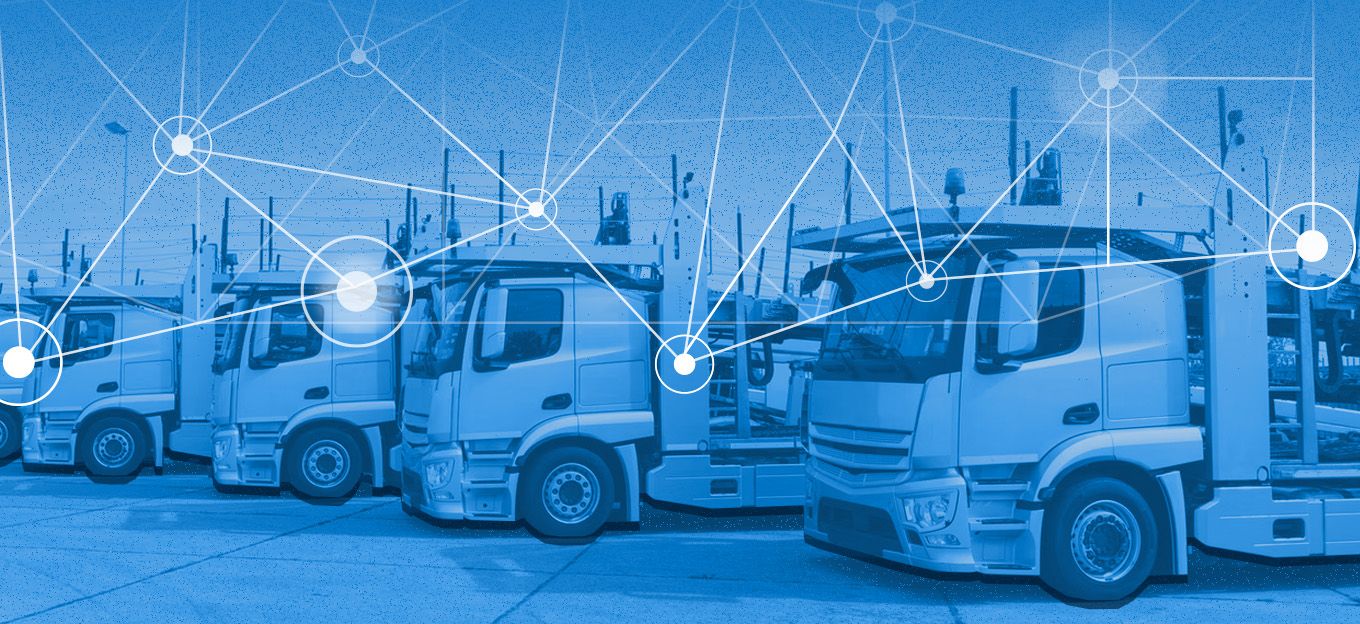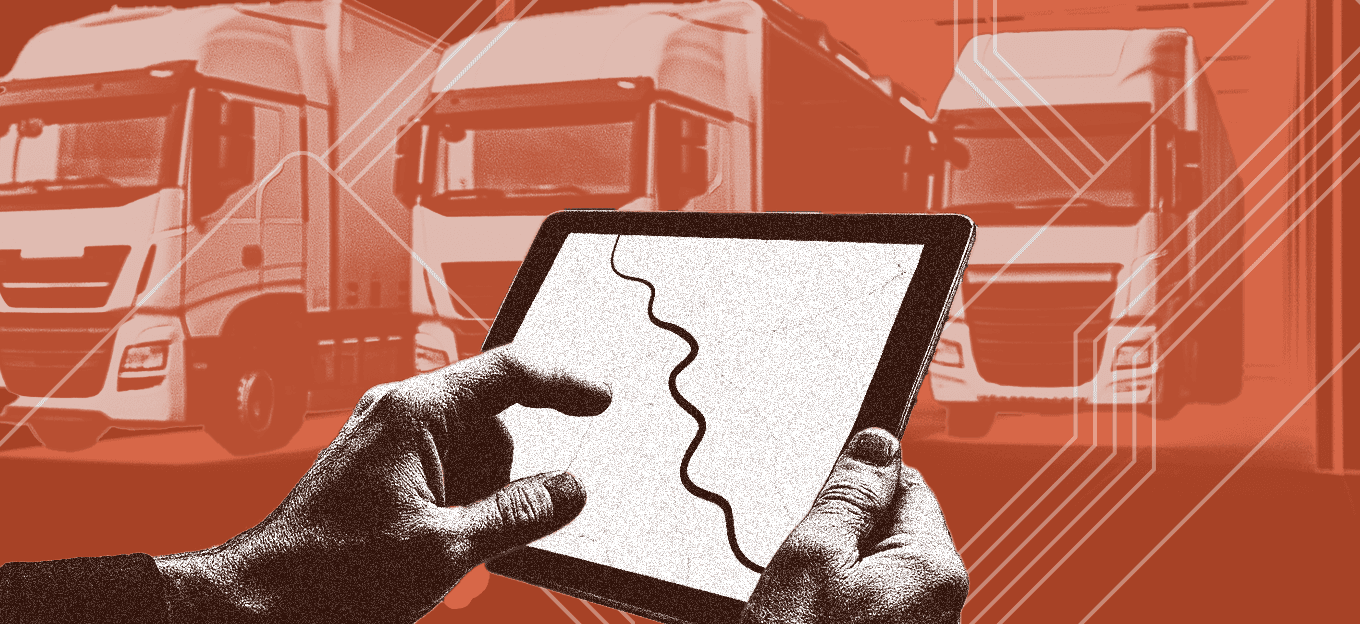Navigating ELD Compliance and Optimizing Resources with Fleet Management Solutions
Navigating ELD Compliance and Optimizing Resources with Fleet Management Solutions
- Last Updated: April 29, 2025
Monogoto
- Last Updated: April 29, 2025



You might be surprised how frequently valuable assets become missing. Equipment or vehicles are often difficult to locate, or remain idle because their real-time status is unknown. And let’s not even begin about heavy machinery stuck in maintenance due to unplanned technical issues.
Apart from inefficiencies in resources-usage, fleet owners increasingly need to adhere to regulations on reporting emissions, logging driver’s hours of service, mapping state-border crossings and reporting of fuel usage.
Fleet management enables better utilization of resources and improved operations efficiency due to better insights into the location, state and usage patterns of assets, vehicles and drivers.
What is fleet management?
Fleet management involves leveraging technology to gain accurate, real-time insights into the status and performance of vehicles, (heavy) equipment and – to some extent – human behavior. Through the collection and analysis of data, fleet utilization can be optimized, downtime reduced, and overall efficiencies improved.
Whether it’s trucks, excavators, mining equipment, or rental machinery, these assets are costly, energy-intensive, and environmentally impactful. Detailed telemetry data play a crucial role in maximizing usage, reducing operational costs, improving road safety, and lowering CO₂ emissions.
How fleet management works
Vehicles by default collect onboard telematics, offering insights into their usage, inner-workings and potential issues. Telematics include diagnostics of the engine, fuel usage, emissions, and may also contain data about the driver behavior. This data can typically be accessed via an OBD-II (On-Board Diagnostics) port, which communicates using the standardized protocol called CAN bus. Since 2008, CAN bus has become widely adopted, driven by US regulations mandating its implementation in heavy vehicles.
Companies like Bransys provide cellular-enabled devices that read onboard telematics, occasionally adding additional data such as GPS. The data is relayed via a cellular connection to a server where it is stored, visualized, and analyzed. Accessing this data enables fleet managers to optimize scheduling, streamline maintenance, and enhance route planning.
Typically, these devices offload data via public cellular networks using technologies like LTE-M. Increasingly, there is demand for satellite-enabled devices. Novel cellular chipsets now support direct satellite communication, enabling connectivity for vehicles operating in remote areas.
For older vehicles or equipment without an OBD-II port, external sensors are used. These sensors include accelerometers for vibration sensing, GNSS modules for location tracking, tire-pressure sensors, tank-level sensors, and temperature sensors to name a few.
Regulatory compliance through fleet technology
Fleet managers increasingly rely on digital tools to meet regulatory requirements. In the US, the ELD (Electronic Logging Device) regulation mandates that commercial drivers digitally log their Hours of Service (HOS) to enhance road safety and eliminate manual record-keeping. Similarly, Nevada’s Continuous Monitoring Program requires heavy vehicles to automatically report emissions data, eliminating the need for manual inspections.
The IFTA (International Fuel Tax Agreement) and IRP (International Registration Plan) add further complexity, requiring fleets to track fuel usage and allocate vehicle registration fees proportionally, depending on how many miles a vehicle drives in each state or country.
Fleet management systems make compliance with these varied requirements far easier, reducing paperwork for both drivers and carriers, minimizing errors, and improving road safety.
Real-world business cases
Here are four practical examples demonstrating fleet management technology’s real-world benefits:
Case 1: Ensuring ELD compliance
Fleet operators in the US are required to comply with the ELD mandate, which enforces accurate tracking of driver hours to ensure safety and prevent overwork. By integrating ELD-compatible devices into their fleet, companies can automate the logging of engine activity, mileage, and driver behavior. This not only reduces administrative burden but also protects businesses from costly compliance penalties and improves overall fleet safety.
Case 2: Rental agencies – usage-based billing
Real-time fleet management systems enable rental agencies to charge customers based on actual usage. This wouldn’t be possible without reliable sensing, communication and data management. Companies like Bransys combine OBD-II data with additional vibration sensors to accurately track and verify operating hours, resulting in accurate invoicing and greater transparency for both rental companies and their customers.
Case 3: Nevada’s Continuous Monitoring Program
Nevada requires heavy vehicles (2008 and newer) to continuously monitor and report their emissions directly to the state Department of Motor Vehicles. Connected systems that diagnose emissions via the ODB-II port, eliminate manual inspections, reduce operational disruptions, paperwork, and the risk of compliance-related penalties.
Case 4: Reducing downtime through predictive monitoring
Downtime is one of fleet management’s most costly challenges. Real-time fleet data about location, movement, tire pressure and vibration helps detect potential problems early. For instance, catching incorrect tire pressure proactively can avoid costly blowouts, improve fuel efficiency, and prevent safety hazards, significantly reducing the likelihood of unplanned downtime and operational delays.
Why this matters
Fleet management is more than dots on a map; it represents resource optimization which leads to cost savings, reduced downtime, compliance simplification, and improved sustainability. Turning telemetry data into actionable insights enables smarter, faster, and more profitable business decisions.
Fleet management solutions are more accessible and impactful than ever with today’s low-cost sensors, standardized interfaces (OBD-II and CAN bus) and seamless cellular connectivity via public networks or satellite.
The Most Comprehensive IoT Newsletter for Enterprises
Showcasing the highest-quality content, resources, news, and insights from the world of the Internet of Things. Subscribe to remain informed and up-to-date.
New Podcast Episode

What is Hybrid Connectivity for IoT?
Related Articles




